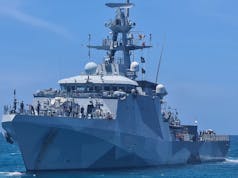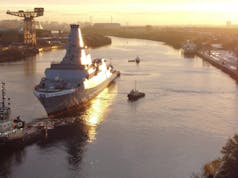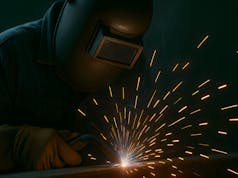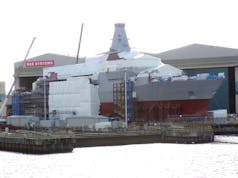The Ministry of Defence have confirmed that BAE Systems are the preferred supplier for the Royal Navy’s Maritime Indirect Fire System (MIFS) for the Type 26 Frigate.
BAE will provide the Integrated Gunnery System for the Type 26 frigates being built by the company in Glasgow. The gun chosen is the Mk 45 Mod 4 5in/62 calibre gun. The deal also includes an automated ammunition handling system and a fire control system.
The gun is currently in service with the US Navy and 10 other nations. It has been reported that the mountings will be remanufactured and upgraded from existing Mk 45 Mod 2 gun systems.
Joe Senftle, vice president and general manager of Weapon Systems at BAE Systems, said:
”The Mk 45 is at the centre of our MIFS solution and will provide the Royal Navy with a low-risk, low-cost, and highly effective automatic weapon system. ‘It combines the benefits of a mature, reliable, and proven system with the capacity to deliver the full range of ammunition available today and in development.”
The five inch gun selected is designed for use against surface warships, anti-aircraft and shore bombardment to support amphibious operations.
The Type 26 frigate represents the future backbone of the Royal Navy and a massive leap forward in terms of flexibility of surface vessels enjoyed by the service. It will replace the 13 Type 23 frigates of the Royal Navy and export orders are being sought after by BAE. The programme has been underway since 1998, initially under the name “Future Surface Combatant”. The programme was brought forward in the 2008 budget at the expense of Type 45 destroyers 7 and 8.
The design has now passed Main Gate approval and a detailed design is under way and it is expected that the Type 26 will “enter service as soon as possible after 2020″, each vessel is expected to cost between £250-£350m.
The original working model for the ship put the length at 141 metres long and gave a displacement close to 7,000 tonnes. In late 2010 it was reported that the specifications had been reduced in order to bring down the cost from £500m to £250-350m per ship. By 2011 new specification details began to emerge of a 5,400 tonne ship emphasising flexibility and modularity. The new design is believed to be 149m long, a top speed of more than 26 knots and accommodation for up to 200 people. It is expected to have 60 days endurance and have a range of 7,000 miles at 15 knots.













Wot no 155?
Why?
Because at one point they were looking at putting 155mm on them as a bigger weapon.
Austin Tedesco David Frost
Are there any plans to refit the type45’s with the new 5″ guns
Are the navy going to standardise their systems so each ship has the same sensor array and missile defence attack systems , this could save money too, is the frigate not using the same hull as the destroyers , this too would save costs , on repair , maintenance , building them ect
It seems wastefull not to allow all the ships to use the same missile , sonar. Radar ect allowing all the ships full integration , using the same hulls surely would save and allow a few more to be built
Are the navy going to get some corvett size ships too ?
Why arent all the Type 45 Destroyers armed with Harpoons?
In addition why not have 16 Harpoons per T45!!!